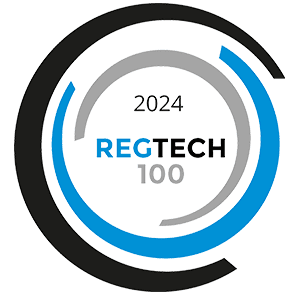When you’re choosing a new ad compliance software, there are plenty of questions you should be asking to ensure you’re getting the best fit for your organization. In fact, we’ve actually put together a guide to help you evaluate regtech offerings and choose the best option for your organization.
One other question you should ask is whether your new advertising compliance tool provides opportunities for integrations that make your processes easier.
What Is an Integration?
Integrations combine two different software platforms or work areas to share data or create a cohesive process.
Examples of ways you can use integrations include:
-
- Programmatically creating and interacting with submissions
- Interacting with a primary user store to provision and maintain user lists
- Feeding data to a warehouse
- Providing a system of record information to automatically pull documents from distribution systems when they are expiring, and to update the expiration (also considered “date of last use” for record retention) when a document is retired in a distribution system
How Will My Team Benefit from Software Integrations?
Integrations make it easier for your team members to have a seamless – from content creation to compliant material use to audit readiness.
When you properly use integrations, you can create intelligent workflows and processes, rather than context switching between platforms and tasks. And, you can ensure nothing gets dropped in the manual process of moving information between platforms.
When you’re able to use integrations and manage your work tasks in one place, you can also improve the consistency of the data you’re generating. You’ll be better able to determine where content is coming from, where processes are bottlenecking and where you’re achieving success.
Finally, using integrations means you have more freedom in the platforms you select. You can pick the best of class in each area (CRM, business intelligence, marketing automation, compliance software, etc.), or the one that’s most custom-fitted to your team, instead of picking a big box software and adjusting your processes to fit its capabilities.
Integrations between your software platforms mean you’ll be able to be more agile and efficient when meeting the needs of your business partners, and with greater confidence in the diligence of your efforts.
What Risks Come from Using Separate Platforms Instead of an Integrated Advertising Compliance Platform?
The biggest risk from using separate platforms – instead of a single platform or instead of creating the appropriate integrations between platforms – is using one that is not truly 17(a)-4 books and records compliant.
Some platforms may suggest that they can provide the appropriate level of compliance structure and protection. However, oftentimes they won’t be able to do it without additional tools being integrated, especially when it comes to maintaining books and records compliance.
How Can You Know Whether A Platform Is Compliant?
Just providing electronic storage isn’t enough. And, just providing a safe storage platform isn’t enough.
WORM compliance, recordkeeping which ensures content is quickly discoverable, auditable, and retained in a way that prevents tampering in any form or fashion, is a prerequisite for protecting your information, but it isn’t enough to meet the full books and records compliance required by the SEC Rule 17(a)-4.
The guidelines are very specific on 17(a)-4 books and records compliance. These guidelines include:
-
- The provider should be able to show a letter of attestation that certifies it is an electronic storage medium that arranges and indexes records and those books and records will be maintained, preserved, and readily accessible for the required five-year time period.
- There should be no option to configure the system to violate the rules. These guidelines should be firmly in place and impossible for anyone within the broker-dealer or RIA group to violate.
- There should be no ability to delete information from the platform. This not only creates an audit trail but ensures that your information is in place, that you have backup copies accessible, and that you can produce a human-readable copy even if your software isn’t currently operational.
You may have an excellent team that is on the ball when it comes to creating content. You may have reviewers who are thorough and detail-oriented. However, if you’re dropping a portion of your review process somewhere in between your content creation platform and your final review process, all your good work won’t mean a thing in the eyes of your auditors.
Ensure your disparate platforms are connected and fully compliant so that you’re using the best set of tools to create AND document your good work. Then, you’ll be confidently prepared for your regulator’s visits and questions, because everything will be in one place and audit-ready.
About Red Oak Compliance
Red Oak Compliance is the global advertising review software of choice in the financial services industry, serving clients with more than $19 trillion in assets under management. Red Oak’s advertising compliance review software offers quick implementation timelines, as well as agile technology that responds to client needs and is 100% Books and Records compliant. Our clients report 35% faster approvals and 70% fewer touches, with many experiencing even better results. Are you ready to minimize risk, reduce costs, and improve efficiency? Contact the Red Oak team to learn how.








